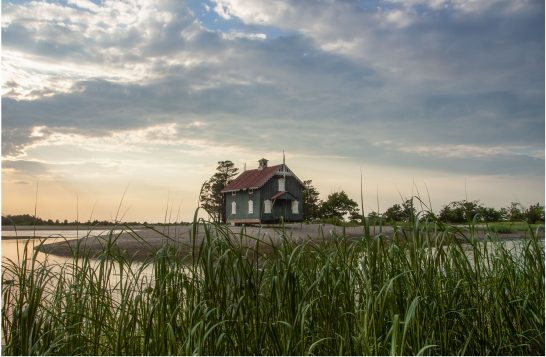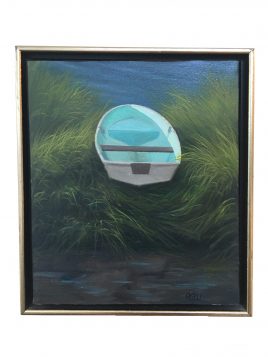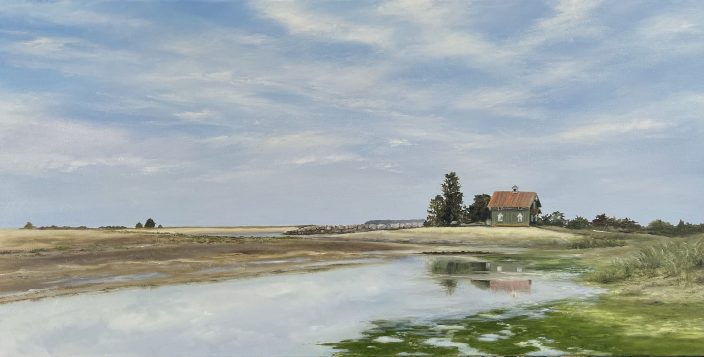The Reboli Center for Art and History in Stony Brook presents its winter holiday exhibit, “Celebrate the Season,” from Nov. 4 through Jan. 23, 2022.
The show will feature the artwork of a variety of artists, including paintings by the late artist, Joseph Reboli, the Setauket-based artist for whom the Center is named.
Participating artists include Mireille Bellajonas, Lucille Betti-Nash, Grainne de Buitlear, Al Candia, Donna Crinnian, Julie Doczi, David Ebner, Pamela Herbst, Tyler Hughes, Melissa Imossi, Joanne Liff, John Mansueto, Esther Marie, Jim Molloy, Dan O’Sullivan, Vicki Sawyer, Gia Schifano, Carl Siege, Jodi Stills, Angela Stratton, Mike Stanko, Ty Stroudsberg, Joseph Reboli, Doug Reina, Corinne Tousey, Hal Usher, Mary Jane van Zeijts, Marlene Weinstein, Charles Wildbank, and Patricia Yantz.
“We are thrilled to have so many Long Island artists in the show,” said Lois Reboli, a founder of the Reboli Center.
In addition, the Reboli Center’s Design Shop will once again be the envy of Santa’s workshop as it is decorated for the holidays and filled with beautiful and handcrafted gifts for people of all ages. In the seasonally-festive shop, you will find jewelry, felted ornaments, artisan crafts, art books, children’s toys, scarves, mittens, hats, prints and more. Reboli gift certificates are also available in any denomination. Free gift wrapping is available while you enjoy the holiday spirit at the Center.
The Reboli Center is located at 64 Main Street in Stony Brook, and is open Tuesday to Saturday from 11 a.m. to 5 p.m. and on Sunday from 1 to 5pm. Admission is free. For more information, please call 631-751-7707.
Be sure to visit the Center’s website at www.ReboliCenter.org for holiday hours, pop-up shops and special events.













